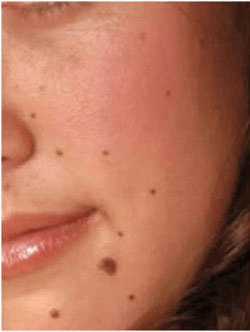What is electrocauterization?
Electrocauterization is a routine surgical procedure. A surgeon or doctor uses electricity to heat tissue in order to:
- prevent or stop bleeding after an injury or during surgery
- remove abnormal tissue growth
- prevent infection
Why is electrocauterization used?
The treatment has a number of uses.
Surgery
A surgeon may use this technique to cut through soft tissue during surgery so they can gain access to a particular site. Electrocauterization allows your surgeon to seal off blood vessels that are bleeding during surgery. Sealing off blood vessels helps prevent blood loss and keeps the site clean.
Tumor removal
This method is sometimes used to remove abnormal tissue growth, such as a tumor. This approach is common for growths located in sensitive areas that are difficult to reach, such as your brain.
Nasal treatment
If you get frequent nosebleeds, they’re likely being caused by an exposed blood vessel in your nose. Your doctor may recommend this type of treatment even if your nose isn’t bleeding at the time you seek medical advice.
Wart removal
This technique is frequently used to treat genital warts or warts on other areas of the body. Wart removal usually only requires one treatment.
How do you prepare for electrocauterization?
No special preparation is needed for this procedure. In the case of excessive bleeding, your doctor may take a blood sample to test for anemia or a clotting disorder. Frequent nosebleeds are one example of excessive bleeding.
Several days before your surgery, your doctor may tell you to stop taking blood-thinning medications such as:
- aspirin
- ibuprofen (Advil, Motrin)
- warfarin (Coumadin)
Your doctor will tell you not to eat or drink anything after midnight the night before your procedure. You should also try to avoid smoking on the days leading up to your surgery.
Where and how is electrocauterization administered?
Although electrocauterization is often used during minor surgeries, it’s a specialized form of treatment.
Before the surgery, your doctor will place a grounding pad on your body, usually on your thigh. This will protect you from harmful effects of the electric current. They’ll clean your skin at the site of the surgery and coat it with gel to prevent burns.
You’ll be given a local or general anesthetic, depending on the type and extent of the surgery. Your surgeon will use a small probe with a mild electric current running through it to seal or destroy tissue.
The electric current doesn’t enter your body during surgery. Only the heated tip of the probe comes into contact with tissue. The heat seals or removes the tissue it touches.
What are the risks of electrocauterization?
The treatment itself has minimal risks. Risks of electrocauterization may include:
- slight bleeding
- infection; your doctor may give you antibiotics to reduce this risk
- pain or mild discomfort; your doctor may prescribe you pain medication for after the procedure
Tell your doctor if you have a pacemaker or prosthetic joint before undergoing this treatment.
Risks of anesthetics
Most healthy people don’t have any problems with general anesthesia. However, there’s a small risk of long-term complications. These risks largely depend on your general health and the type of procedure you’re undergoing.
Some factors that may increase your risk of complications include:
- medical conditions involving your lungs, kidneys, or heart
- family history of adverse reactions to anesthesia
- sleep apnea
- obesity
- allergies to food or medications
- alcohol use
- smoking
If you have these factors or are older, you may be more at risk for rare complications:
- heart attack
- a lung infection, such as bronchitis or pneumonia
- stroke
- temporary mental confusion
- death
What’s the long-term outlook for people who receive electrocauterization?
Electrocauterization should effectively stop bleeding if it’s used during surgery or after an injury. After surgery, you may notice swelling, redness, and mild pain. Depending on the surgery performed, you may develop scar tissue afterward.
In treatment of a tumor or wart, all abnormal tissue growth will be removed. The heat from the probe should sterilize the site. Typically, there’s no need for stitches.
Your recovery time after treatment will depend on the size of the treated area and the amount of tissue removed. Healing usually takes place within two to four weeks. It may take longer if a large area of tissue has been treated.


Welcome to Zaytuna Medical Spa, where taking care of your skin is our only priority. Located in the prestigious intersection of peel, Vaughan, Toronto, and Peel regions. we offer high-end skin treatments in a clean and cozy atmosphere. We take pride in creating highly customized treatments that are as unique as you. Our services include Medical-grade Facials, Photo Facial, Laser Hair Removal, Botox, Fillers, PRP, Hair Restoration Therapies, Microneedling, and Chemical Peel. Our professional, friendly team is ready to assist you with the most luxurious treatments in skincare.
As a highly experienced Physician at Zaytuna Medical Spa, Dr.Sabha Cheema believes that healthy, glowing skin begins with exceptional care. Her experience proves that anyone can achieve healthy skin through proper advice, care, and customized treatments for your skin.
